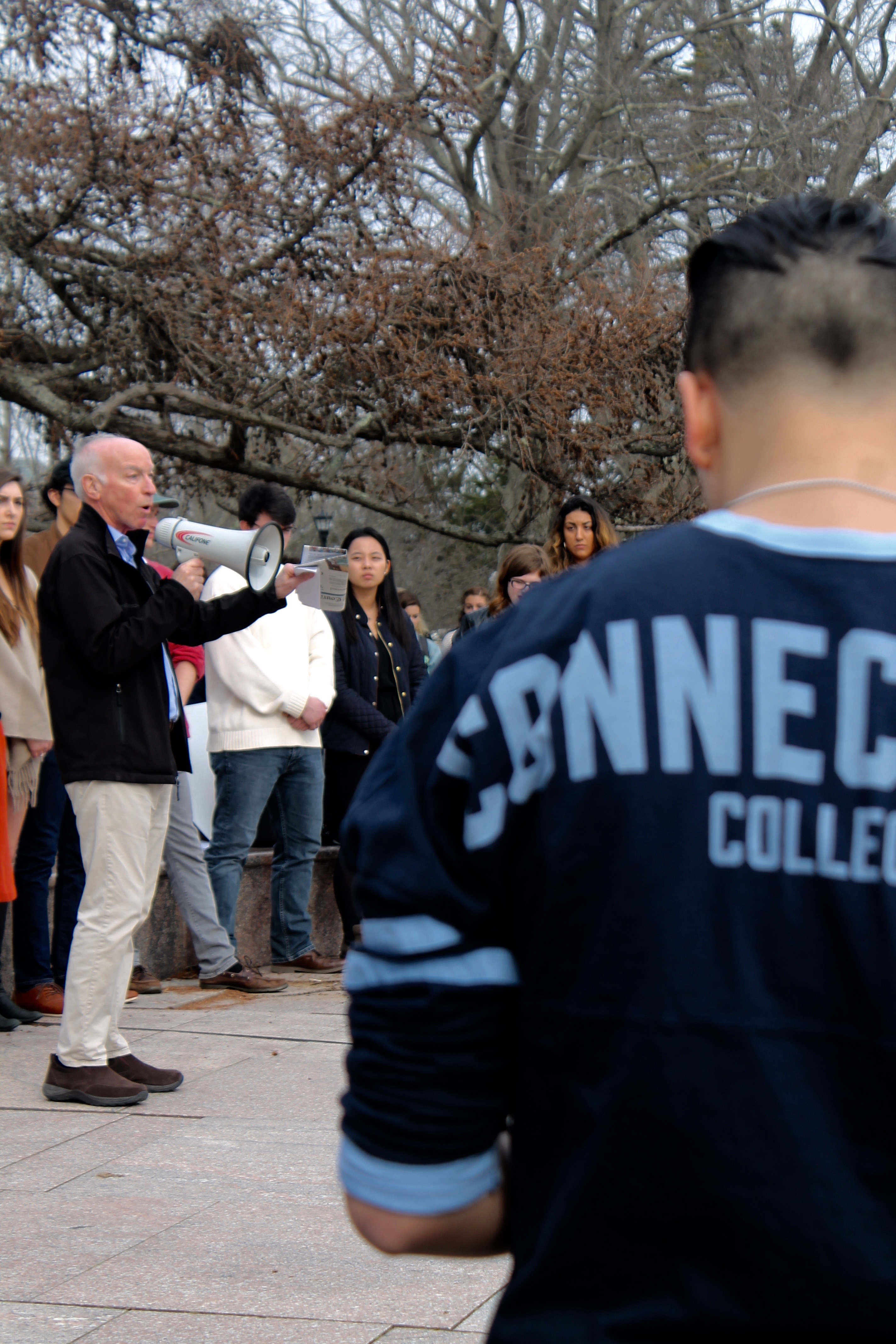To my own bemusement, the presence of Connecticut Second District Representative Joe Courtney did not bring an air of power to the March 1 “Walkout for Our Lives.” The event’s strength came in numbers and from students who invoked various mantras and pleas for change. The students who planned the walk out distributed information on gun violence and scripts that participants could use to call their representatives, encouraging attendees to continue their activism beyond the day’s event.
Courtney’s remarks were long-winded. He spoke for seven minutes, a period of time long enough for an active shooter wielding an AR-15 to fire about a thousand rounds, as Julia Horowitz ’18 aptly noted in her own remarks. Courtney also spoke about the object of time, only now it was not a perception that ended with those lost in the line of a rogue gunman reloading his clip. Instead, the Congressman was speaking about the time politicians have taken and are currently spending in order to bring about adequate gun legislation. However, since meaningful legislation does not exist, Courtney was, by default, also referring to the time some politicians refuse to take to adequately respond to such events that haunt our communities and cast a spectral doom over tomorrow. After a massacre, they turn to each other languidly, and speaking as though they bore guns (not children), they decide psychopaths and eighteen-year-olds cannot play with their babies or bullets anymore.
Wherein there is so much emphasis on stopping psychopaths from obtaining guns, I posit: what does it say about President Trump’s own mental state that he claimed he would have run into Stoneman Douglas High School unarmed, to be shot and killed, before using his position to bring about necessary radical change? That is a question medical professionals will squabble over, while the rest of us understand from Trump’s toadying remarks that he dropped the ball. Like millions of other Americans, he did not seem to get it. The looming issue of school shooters should not be posed as an interrogative question of character in the phrase, “what would you do?” The more pertinent questions remain, what more must we do to prevent said attacks in the future, and how can we foster greater compassion in the wake of extreme malice?
It was evident to me that those who attended the walkout Thursday afternoon did so out of care for their own lives and those of others. Rather than voicing delusions of personal bravado, students spoke of their fears over what would happen if an active shooter wreaked havoc here, at Connecticut College. Those who gathered at the top of Tempel Green took an active stance against those who want to take our time away. This is how we make more time.
In order to combat the problematic gun culture of the United States, we must first make it even remotely difficult for Americans to obtain guns legally. To this day, the United States has the highest gun ownership rate in the world, warranting a broad crackdown on guns. However, more stringent gun laws are only part of the battle. Without law enforcement’s dual efforts in keeping illegal guns off black markets, there is no victory and we can expect further carnage.
The Second Amendment remains protected: we cannot take away semi-automatics or other overly powerful weapons yet, but we will continue to oppose them and propagate a platform of camaraderie over violence, safe spaces for learning over institutions where teachers pack heat. Compassion emanates from people, not from guns. Eliminating a school shooter should not be among the responsibilities of science or math teachers. Would it then be their fault if the desk drawer holding a loaded Glock was opened but the hilt of beaker tongs or of a protractor lying next to the gun was drawn instead? No, the gun is in a safe, whose numerical combination the teacher loses amid semesters of test scores, important dates, and the countdown to lunch.









